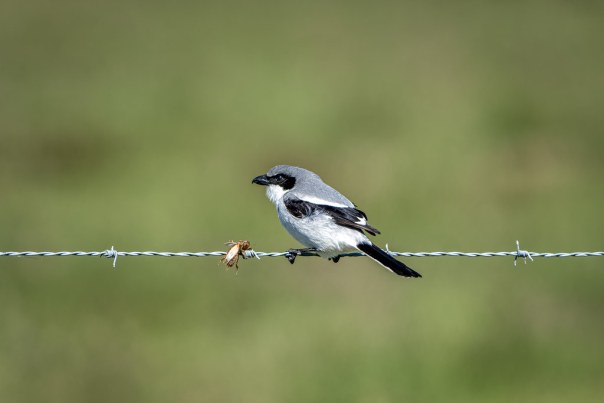I was in Merritt Island National Wildlife Refuge last Thursday morning and made a number of photos I really like. Today I’ll share 10 that show some of what you can see there at this time of year.
 Handsome Hoodie: I spent several minutes watching this Hooded Merganser before he finally turned toward the light. It was worth the wait.
Handsome Hoodie: I spent several minutes watching this Hooded Merganser before he finally turned toward the light. It was worth the wait. Posing Palm Warbler: iBird says these forage on the ground for insects, but I don’t think I’ve seen them do it before – especially close by, out in the open, and in nice light.
Posing Palm Warbler: iBird says these forage on the ground for insects, but I don’t think I’ve seen them do it before – especially close by, out in the open, and in nice light. In the Magrove roots: I like this environmental portrait. I haven’t seen a Common Yellowthroat scrambling around like this before either.
In the Magrove roots: I like this environmental portrait. I haven’t seen a Common Yellowthroat scrambling around like this before either. Preening Roseate Spoonbill: They were in several spots around Black Point Wildlife Drive. This was the closest and the best photo I made of one. I like the coy over-the-shoulder look.
Preening Roseate Spoonbill: They were in several spots around Black Point Wildlife Drive. This was the closest and the best photo I made of one. I like the coy over-the-shoulder look. Reddish Egret and reflection: I spotted 3 or 4 of these always pretty birds too.
Reddish Egret and reflection: I spotted 3 or 4 of these always pretty birds too. Green Heron: It was hiding in the bushes when I first walked by. When I came back it was sitting still, out in the open.
Green Heron: It was hiding in the bushes when I first walked by. When I came back it was sitting still, out in the open. Killdeer and reflection
Killdeer and reflection Osprey and catch: The birds were enjoying a fishing feast alongside Catfish Creek Road.
Osprey and catch: The birds were enjoying a fishing feast alongside Catfish Creek Road. American Kestrel: I almost drove by this tiny falcon, but saw something out of the corner of my eye to the left on the paved exit road at Black Point Wildlife Drive. The light was harsh and it didn’t turn around while I was there. I like the photo anyway.
American Kestrel: I almost drove by this tiny falcon, but saw something out of the corner of my eye to the left on the paved exit road at Black Point Wildlife Drive. The light was harsh and it didn’t turn around while I was there. I like the photo anyway. Wading Willet: I’m glad to see them back in Central Florida.
Wading Willet: I’m glad to see them back in Central Florida.Others I spotted: Belted Kingfishers, Greater Yellowlegs, Brown Pelicans, Anhigas, Double-crested Cormorants, a Northern Harrier, many Northern Shovelers, Blue-winged Teals, Alligators, Sanderlings, Caspian Terns, Savanah Sparrows, Wood Storks, the regular herons and egrets and more.
By the way #1: Jim Boland has seen and photographed the Cinnamon Teal again this year – so if you go, look for it along the Wildbirds Unlimited Trail south of the parking area on the south west corner of BPWD. I looked on Thursday, but didn’t spot it. I guess it’s my “nemesis bird” once again.
By the way #2: It was nice to run into Pat H. out there. I haven’t seen her for quite a while. She’s a wonderful photographer – check out her Flickr stream if you get a chance.
In spite of that darn Cinnamon Teal, MINWR is still a wonderful area. So many photos from a single trip! No wonder it’s is one of my favorite places, especially at this time of year. It’s beautiful and the variety of birds and wildlife you can see is amazing.
Header image: “Across the water”. You can view the full photo here: https://www.flickr.com/photos/edrosack/51759864252/in/dateposted-public/
Sorry for posting so many photos. If it’s any consolation – I could have posted even more!
Thanks for stopping by and reading my blog. Please be kind, take care of yourselves and each other – and if you can, visit one of your favorite nature spots and make some photos!
©2021, Ed Rosack. All rights reserved




































































